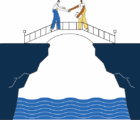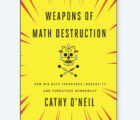
The P&C marketplace is intensely competitive. According to the 2024 NAIC Market Share Report, the top 10 P&C companies command approximately half the total market share. Market competition is even more fierce in personal lines, where the top 10 market leaders control 76% of the private passenger auto marketplace and 62% of the homeowners marketplace. As a result, insurers are always scanning the horizon, searching for the next big wave to ride to greater heights. At the 2025 RPM Seminar in Orlando, “The Pricing Evolution: From Offline to Live Rating” session made the case for live rating as the next great opportunity for insurers looking to reach new heights in pricing sophistication and speed to market.
The session was presented by Damiano Massimi and Jacopo Marchesan, ACAS, both from Munich Re, along with Klayton N. Southwood, FCAS, as moderator from WTW. The following is a summary of their work.
First, how did we get here? A critical insight into this pricing journey is to observe that discovery and adoption of algorithms in insurance pricing are two different things. GLMs were discovered in 1972, but it took until the mid-to-late aughts for GLMs to become widespread in insurance pricing. The key drivers of this adoption were the mass digitization of insurance data and the advent of cloud computing. As the amount of data available to train models exponentially increased from 2010 to 2020, the predictive power of these algorithms accelerated. But merely having a wealth of data isn’t enough — modelers still require the resources to fit their models in a timely manner. Thus, the proliferation of cloud computing was key in providing the computational resources necessary to hasten the model development cycle. These two forces in tandem created the modern GLM, which is now the gold standard of insurance pricing.
In today’s marketplace, insurers face three key challenges that are in tension with one another: market competition, innovation demand and regulatory compliance. Particularly in personal lines, market competition forces both new and established insurers into aggressive pricing strategies. Consumers expect strong customer experiences and innovative products. This tension puts pressure on insurers to have an agile and forward-looking mindset if they seek to grow profitably. At the same time, insurers also need to adhere to diverse and evolving regulatory requirements. This overhead increases the operational cost of the product, particularly if the company seeks to gain approval for innovative ideas.
While live rating lacks a universally accepted definition, there are some common attributes that can guide insurers. Live rating platforms should be sophisticated in their real-time calculation capabilities and should be seamlessly integrated into the company’s broader technology ecosystem. These features allow for real-time, accurate quotes to be generated through a streamlined user experience, utilizing the latest and greatest machine learning algorithms available to actuaries. Efficient integration into the company’s systems enables on-the-fly adjustment and deployment of rating factors, enabling insurers to quickly adapt to changes they are seeing in the marketplace. Furthermore, this framework allows for the ongoing monitoring and refitting of pricing models, perhaps on a daily or even hourly cadence.
Traditional end-to-end pricing frameworks typically involve a couple of handoffs. First, the pricing team develops their models and rates in their analytical environment and then hands off their decisions to IT for implementation into their policy administration system (PAS). From here, IT would take those models (or model output) and program the components of the rate order calculation into the rating engine. Then application programming interfaces (APIs) connect to the PAS and enable customers to interact with the front end (e.g., a website). These handoffs are usually very slow due to the necessity for IT to program the changes, and they’re prone to error. In some cases, pricing models need to be simplified to meet the technological requirements of the rating engine.
A live pricing framework would change this paradigm by bringing the rating engine directly into the analytical pricing environment, controlled by the pricing team. This change eliminates the need for a handoff and enables the pricing team to deploy new rates or pricing models independently, without the need for IT or other outside assistance. Then, the rating engine can be connected directly to the digital front-end through APIs. This framework allows the pricing team to do things that were previously difficult when reliant on IT resources. For example, traditional frameworks may require combining sub-coverages into a single model due to PAS resource constraints. This modern framework more easily enables multi-year projections or shifting away from Frequency/Severity models to more complex models such as GBMs, GAMs or even deep learners.
With the pricing team’s ownership of the rating engine, more sophistication in pricing can unlock new insights. Different types of models can enable more accurate or nuanced pricing strategies. Stepping beyond a point-in-time view of pricing, actuaries can start to build simulations of future customer behavior. Modeling of price elasticity, competitive intelligence and multiyear projections allow the actuary to build more sophisticated lifetime value analyses, which can be optimized for a target function (such as profit or retention), constrained on metrics of interest (e.g., loss ratio), over a long-term time horizon. By producing many different simulations that can be compared against one another, the actuary and relevant stakeholders can get more insight and precision in their pricing philosophy. Furthermore, by owning the rating engine, actuaries can construct a continuous and automated process whereby models are trained, deployed, monitored, retrained and redeployed automatically as new data is gathered.
The pace of technological change in our society is staggering. While the challenges that we face as actuaries are numerous, the road ahead demands speed, sophistication and thoughtfulness. As such, it’s more critical than ever for insurers to take a hard look at their broad technological ecosystem and look for efficiency gains. The leaders of the future will be the ones who develop agile processes that balance technological priorities, such as complexity and precision, with more human qualities, like a seamless user experience and personalized product offerings.
David Idoux is an actuary lead at USAA and is a guest columnist for AR.













